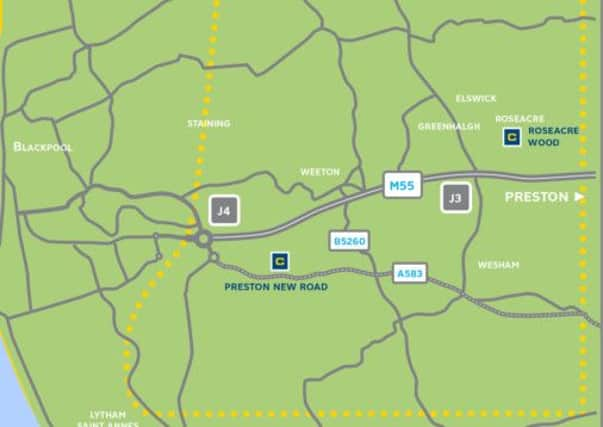Revealed - full extent of fracking bid


Cuadrilla Resources has submitted a bid for permission to drill up to four wells at Preston New Road, Little Plumpton, and is awaiting Lancashire County Council’s decision, expected by October.
And next week it is set to submit an application for its proposed second gas facility at Roseacre.
Advertisement
Hide AdAdvertisement
Hide AdThe county council has formally accepted the Little Plumpton application and will now begin its own consultation.
The planning application and its accompanying Environmental Statement – a document hundreds of pages long – is now accessible to the public.
Within its 21 chapters it reveals a catalogue of information about the process at Little Plumpton. It says four wells would be constructed around 500 metres west of the village – the first drilled at a depth of 3,500 metres to provide “data” on the shale there.
Once exploratory drilling of each well starts, it must continue 24 hours a day seven days a week until completed, the report says.
Advertisement
Hide AdAdvertisement
Hide AdThe actual fracking of the wells, the extraction of gas from shale rock deep underground by injecting liquid at high pressure, would then take around two months per well, but would not continue at night despite staff remaining there 24 hours a day.
The statement also reveals that removal of waste “flowback” water, containing low levels of natural radioactive material, would be from the site by road to a treatment facility.
There would also be burning of gas in two flare stacks for as long as two years for each well if findings on the amount of gas are favourable.
And it admits there would be an increase in traffic on nearby roads because of wagons going to and from the site.
Advertisement
Hide AdAdvertisement
Hide AdEven if the supplies of gas are not sufficient to warrant full scale extraction, the whole process from building the drilling platform to returning the site to its original condition will take close to five years.
The report concludes that the visual impact of “taller pieces of equipment” and the “temporary sky glow” from night time exploration could be classed as “significant residual effects” of the process.
But Francis Egan (pictured), chief executive of Cuadrilla, said: “We’ve been working hard to take on board feedback received during our extensive consultation with local residents, community groups and broader stakeholders, and I am very grateful to those people who gave us their comments.
“Where it has been reasonably practical to do so, we have amended our plans to incorporate feedback and suggestions.”